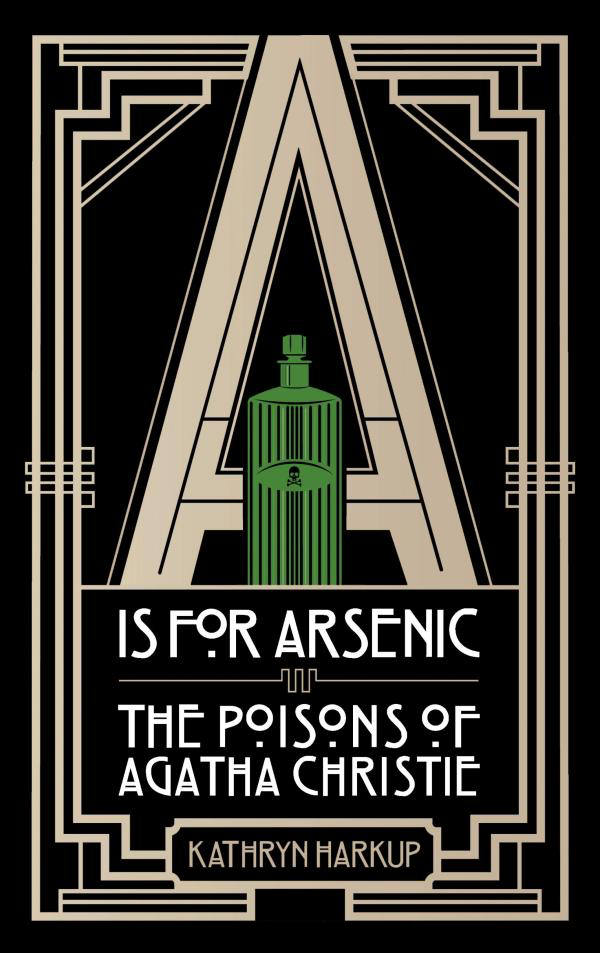
A is for Arsenic : The Poisons of Agatha Christie
By Kathryn Harkup
Published by Bloomsbury USA
ISBN-13: 978-1472911308
The name "arsenic" has become almost synonymous with poison - it could be argued that it represents the gold standard of criminal poisoning. Arsenic has a long and illustrious history of murder and assassination, stretching from the time of the Ancient Greeks to the present day. This is often the poison people most associate with Agatha Christie, but in fact only eight characters, in four novels and four short stories, were dispatched using this infamous element and some of these die "off stage" with little descriptions of their symptoms. They form a relatively small proportion of the more that 300 characters Dame Agatha bumped off in her career.
I have a confession to make - I never much cared for Agatha Christie. I haven't read many of the 140,000 novels she wrote but I thought her writing was dated and her characters horrible Don't get me started on that bitch Marple. Maybe I just had bad luck, certainly she has remained popular and in print for almost a century. And having such a large body of work allows for entertaining books like A is for Arsenic to be written.
A is for Arsenic is a poison-by-poison investigation of Agatha Christie's entire corpsey corpus. Each chapter describes the real world chemical, it's discovery, uses, means of detection, as well as its biological effect as a poison and before delving into the part it plays in Christie's plots.
As the excellent introduction to A is for Arsenic states, Christie was a trained pharmacy worker and had an excellent knowledge of drugs and toxins that she put to good use in her novels. However, she often took liberties with the symptoms in order to make the story work or sometimes because the real effects are just too gruesome even for a murder mystery.
Using Christie's more famous stories to illustrate the effects of chemicals is an extremely entertaining idea. Harkup (a chemist) deftly goes over the details and is gracious enough not to spoil the endings of any of the stories. Of particular note are the passages that concern real historical murders committed with poisons and how they were solved.
But the best part of A is for Arsenic is the lengthy table at the end, where Harkup summarizes every poison related murder in the entire collected works of Christie - an amazing piece of research.
It turns out that reading about Agatha Christie stories is more amusing and educationalI have nothing concrete planned but you never know when a knowledge of poisons might come in handy than the reading stories themselves.
I highly recommend A is for Arsenic. Just don't give it to your butler.
Update : I have since reviewed Kathryn Harkup's new book : Making the Monster - The Science Behind Mary Shelley's Frankenstein.